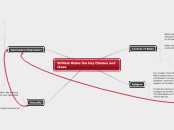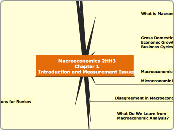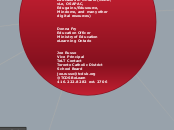Share this with a partner if you choose to share. Summarize information from our online text and add it to this graphic organizer.
Africa (Modules 22 & 23)
Global Trade (Module 23)
European Colonies
In like the 1400s people set sail from aroud Europe and they hoped to find new trade routes
Goods Traded
They traded many things like gold, ivory, and iron, even more
Cities
Djenne-Djenno was one of the oldest cities in africa
Kingdoms (Module 23)
Bantu
Bantu peoples established several kingdoms and then
migrated through Africa
Songhai
After the Mali Songhai took over and Mali
was at it's reaching point
Mali
Mali built upon the foundation off of Ghana
and then Mali soon took over the trade routes
Ghana
Ghana built an empire and they also gained power
over the trade routes
Ethopia
Aksum formed the kingdom of Ethopia and also
realted to the mountains of Ethopia in many ways
Aksum
Aksum was one of the newest civalizations
and they beame a major trading part as a result
Egyptians
The Egypt civalization of ancient Africa focused
along the lower part of the Nile River
Adaptation to Environments (Module 23)
Cultures
A Savanna Culture (Maasai)
This culture does not use tools they herd cattle and other
animals to survive
A Desert Culture (San)
The San peopel have lived for thousands of years
and their home had a very diffrent climate
A Forest Culture (Bambuti)
Some live deep in the rainforest to provide their needs
Early Human Site Discoveries (Module 23)
Ages
Later Stone Age
The later stone age then started making more helpful tools like knives and more
Middle Stone Age
After the early stone age the middle stone age
learned how to make smaller finer tools
Early Stone Age
The early stone age began in East Africa about 2.5 million years ago
Early Hominid Site (p. 746)
All earliest human sites were located in Africa
Culture (Module 22)
Arts & Literature
They have produced artists and writers
Holidays
They have two revolution holidays
Food
They eat grains, fruits, nuts, and also vegetables
Religion
About 90% of them are muslims
People & Language
They speak Arabic and diffrent people travel through
deserts
Climate & Resources (Module 22)
Resources
Natural gas
Gold
Oil
Precipitation
About 1,000 ml. per year
High of 136°F and a low of -23.9°C
The humidity is usally low
Physical Features (Module 22)
Nile River
The Nile delta makes the area fertile
Worlds longest river
Mediterranean Sea
The Nile River fans out to the Mediterranean Sea
The Nile River empties into the Mediterranean Sea
Sahara Desert
The Sahara Desert is the worlds largest desert
The Sahara Desert is rocky









